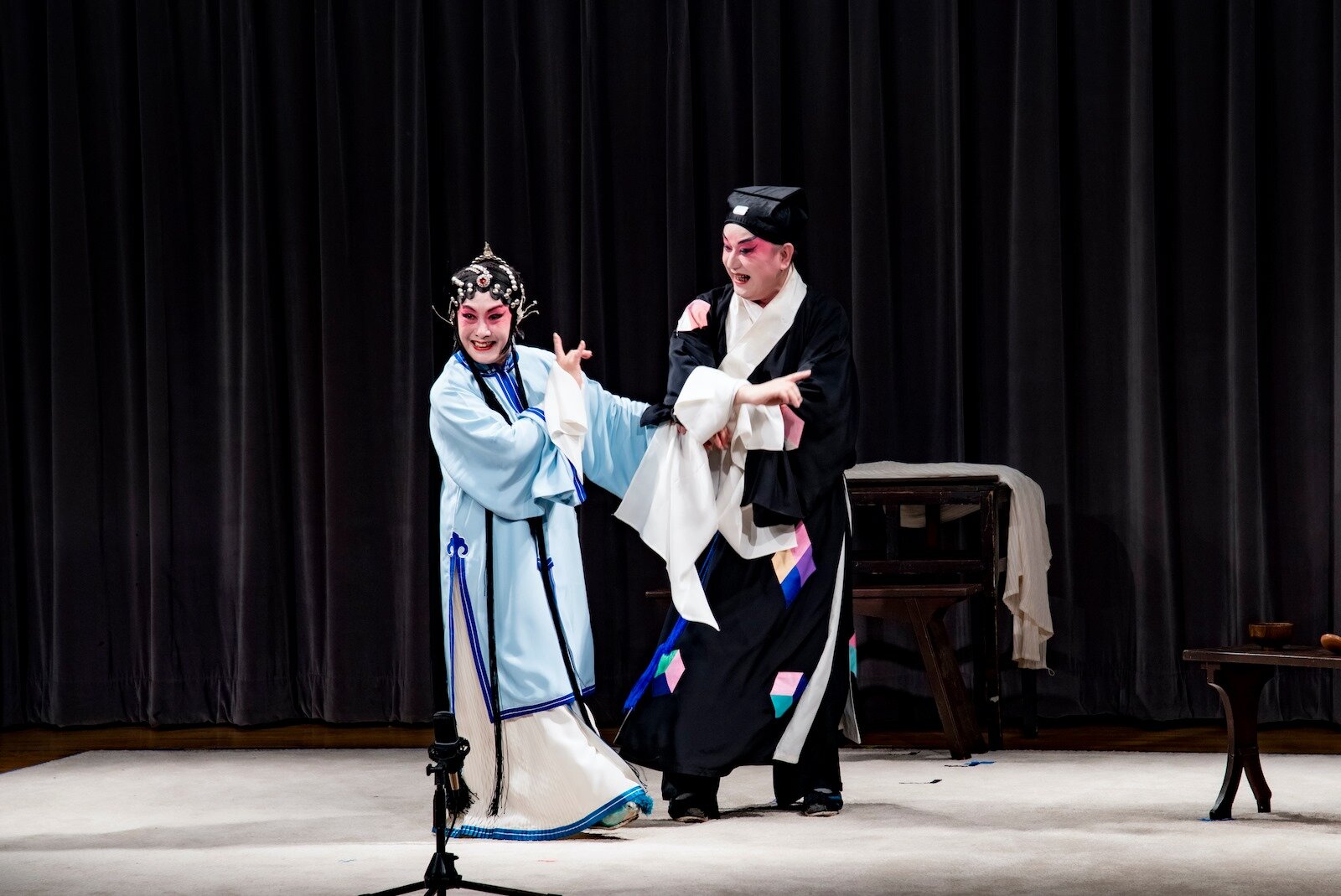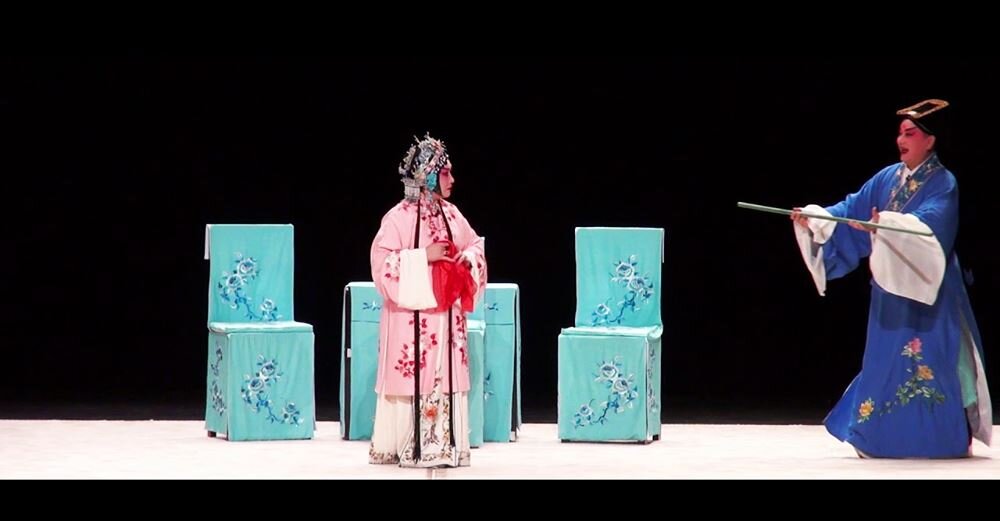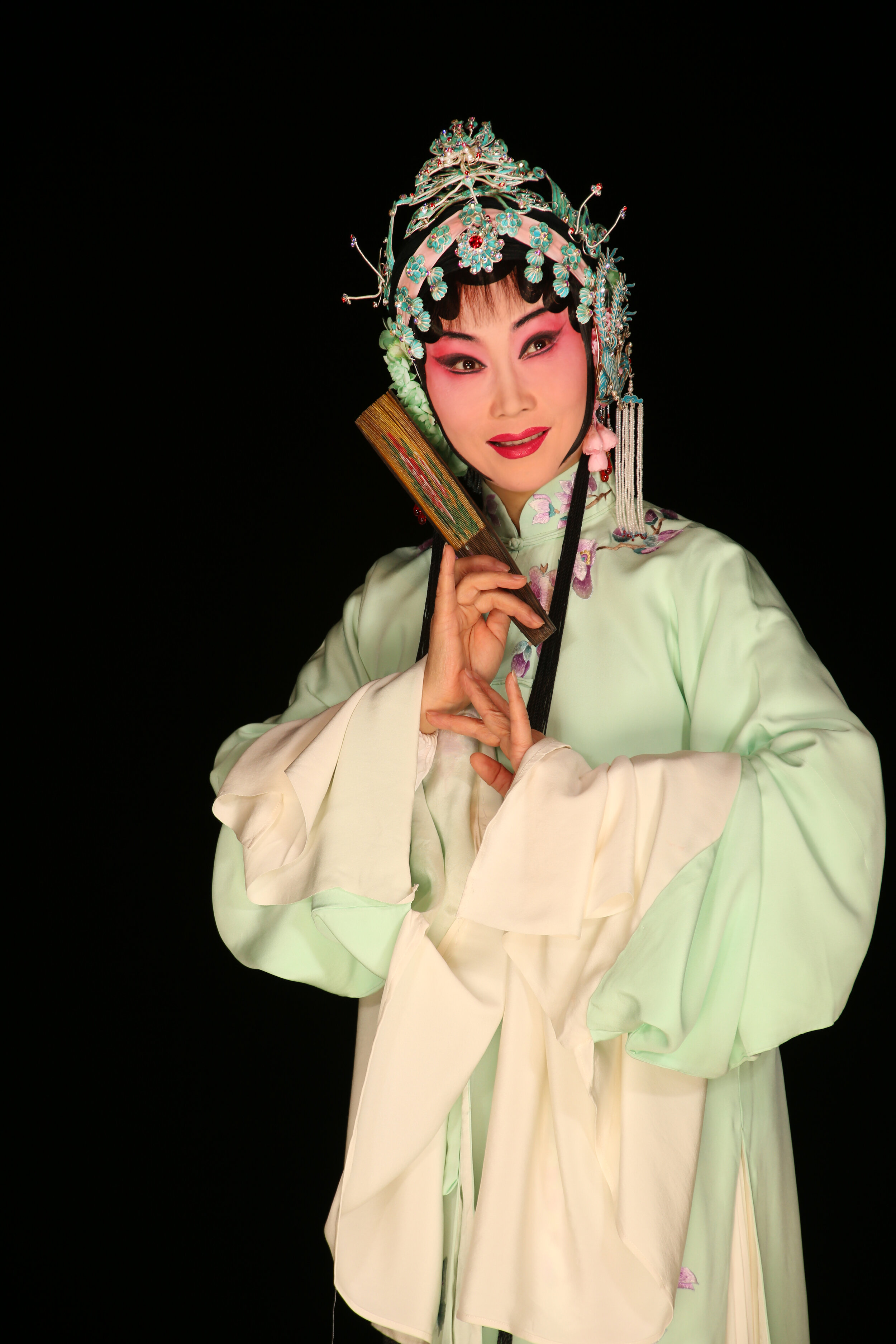Repertoire
summaries of the plays we perform most often

綵樓記 The Story of Nuptial Gallery
《綵樓記》為明王錂所撰,改編自南戲《破窯記》,寫相府劉千金綵樓招親,繡球拋與窮書生呂蒙正,兩人被逐出相府。
The Story of Nuptial Gallery was written by Ling Wang of the sixteenth century and adapted from an earlier play called The Story of the Ruined Shed.

獅吼記 As A Lioness Roars
明朝安徽休寧人汪廷訥所撰,全本三十出,本宋人小說類編,借蘇東坡贈陳季常聽講佛法詩「忽聞河東獅子吼,拄杖落地心茫然。」附會虛構陳季常懼內的故事。
As a Lioness Roars shines as one of the most popular and enduring Kunqu comic plays. The title has become a familiar metaphor in Chinese culture that refers to a jealous and tempestuous woman and her henpecked husband.

水滸記 The Water Margin
《水滸記》為明朝許自昌所撰,取材於名著小說《水滸傳》,寫衙吏宋江與梁山好漢串結,宋江納閻婆惜為妾,閻與宋同僚張文遠私通。
The Water Margin, written by Zichang Xu in the early seventeenth century, dramatizes episodes from the famous novel of the same name, focusing on the character Jiang Song and others related to him.

牡丹亭 The Peony Pavilion
《牡丹亭》 又稱《還魂記》,為明代戲劇家湯顯祖所著《玉茗堂四夢》之一,在文學史和崑曲劇壇上,是一部不朽的名著。
The Peony Pavilion (1598), also known as The Return of the Soul, is written by the prominent playwright Xianzu Tang (1550-1616), a play included in his four dream plays and long regarded as a masterpiece of Chinese literature and kunqu.

玉簪記 The Jade Pin
《玉簪記》為明代戲曲家高濂所撰,,取材自《古今女史》,寫書生潘必正和女尼陳妙常曲折離奇的愛情故事。
The Jade Pin, written by Lian Gao (1527-1609?), depicts a secret love affair between Pan Bizheng, a scholar, and Chen Miaochang, a young maiden cloistered in a nunnery, and the consequences that ensue when it becomes known.

長生殿 The Palace of Eternal Youth
《長生殿》為清代戲劇家洪昇根據白居易《長恨歌》及民間故事《唐明皇游月宮》所編寫,排場恢宏,氣氛凝煉,是廣為流傳、影響深遠的傳統名劇。
The Palace of Eternal Youth (1688) by Sheng Hong (1645-1704), a kunqu classic, weaves an epic tale of political corruption, military revolt, and social unrest into the love story of Emperor Minghuang and Lady Yang.
